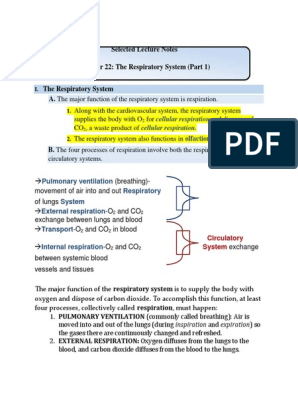0% found this document useful (0 votes)
20 views41 pagesRespiratory System1
The Respiratory System's primary function is to supply oxygen and remove carbon dioxide through processes like pulmonary ventilation, external respiration, transport of respiratory gases, and internal respiration. It includes key structures such as the nose, pharynx, larynx, trachea, bronchi, and alveoli, each serving specific roles in air passage and gas exchange. Various disorders, including asthma, bronchitis, emphysema, and pneumonia, can affect respiratory function.
Uploaded by
dagarnaman445Copyright
© © All Rights Reserved
We take content rights seriously. If you suspect this is your content, claim it here.
Available Formats
Download as PPTX, PDF, TXT or read online on Scribd
0% found this document useful (0 votes)
20 views41 pagesRespiratory System1
The Respiratory System's primary function is to supply oxygen and remove carbon dioxide through processes like pulmonary ventilation, external respiration, transport of respiratory gases, and internal respiration. It includes key structures such as the nose, pharynx, larynx, trachea, bronchi, and alveoli, each serving specific roles in air passage and gas exchange. Various disorders, including asthma, bronchitis, emphysema, and pneumonia, can affect respiratory function.
Uploaded by
dagarnaman445Copyright
© © All Rights Reserved
We take content rights seriously. If you suspect this is your content, claim it here.
Available Formats
Download as PPTX, PDF, TXT or read online on Scribd
/ 41
































































































